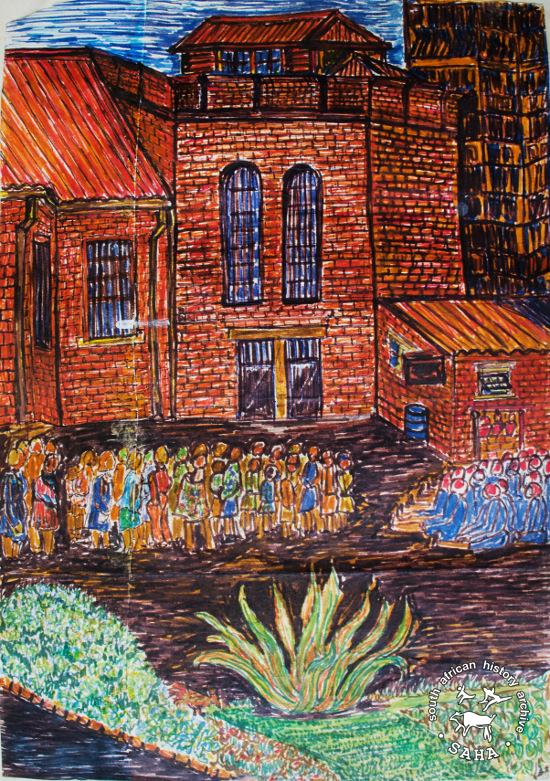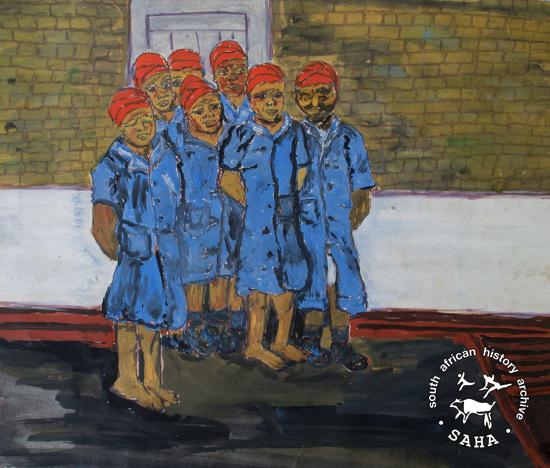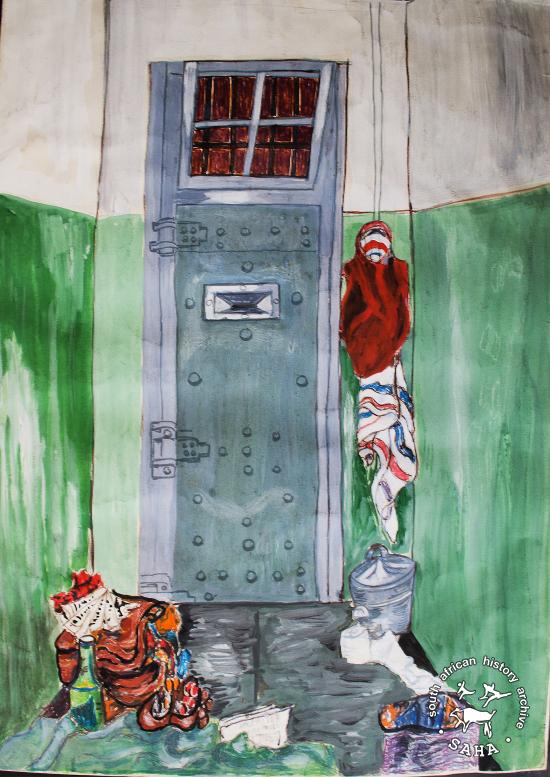As we commemorate the 21st anniversary of Women’s Day in South Africa, we look at the wealth of materials that relate to the former Women’s Jail in the Constitution Hill Trust collection (AL3295) at SAHA. The materials reflect on the lives of women activists such as Esther Barsel, Fatima Meer, Barbara Hogan and mother and daughter, Violet and Sheila Weinberg and the central role each played in the struggle against apartheid. Their narratives, contained in this collection, speak to their commitment to and unwavering belief in a just future for South Africa and the price they paid in their fight for democracy.
The materials on Esther Barsel, donated by her daughters Merle Ruff and Linda Shapiro, consist of letters written by Esther Barsel to her husband Hymie and daughters during her incarceration in the Johannesburg Women's Jail in 1984 and the Barberton Women's Jail from 1985 to 1986.
A fascinating collection of colourful ink on paper illustrations by Fatima Meer, who was detained without trial in 1976 alongside Winnie Mandela, depicts life in the women’s jail in surprising detail. Completed in utter secrecy during her incarceration, the works of art include prison scenes such as her prison cell, female prisoners gathering in the prison yard, one prisoner braiding the hair of another and a warder playing a card game with a prisoner, amongst others.



Barbara Hogan’s comprehensive collection of court records, correspondence, prison records, newspaper clippings and drawings is testament to her years as political activist in prison. The first woman in South Africa to be found guilty of high treason, she was sentenced to ten years in prison in 1982.
The Weinberg collection largely consists of photocopied correspondence spanning Eli, Violet and their daughter Sheila's incarceration; the house arrest of Sheila and Violet; Eli and Violet's exile in Tanzania; correspondence between Sheila and various Indian prisoners held on Robben Island, and letters from the state, most notably the Ministry of Justice and the Ministry of Internal Security, to Eli, Violet and Sheila. As a child, Sheila was exposed to her parents' political activities who both were involved in the trade union movement and the leadership of the South African Communist Party. In 1964 she became the youngest detainee in South Africa, at the age of 17, to be held at the Johannesburg Fort under the 90 day detention law.
Prisoner narratives from other female ex-prisoners also form part of this collection. The stories of Joyce Dipale, Juby Mayet, Deborah Matshoba, Jeannie Noel, Lilian Keagile, and Yvonne Mhlauli, to name but a few, are important in understanding the processes of arrest and unfair trial during the apartheid era; the prison conditions of black inmates; and the relations to warders. Documents include interview transcripts, video interviews, and ex-prisoner workshop transcripts. Some of the ex-female prisoners still meet on a weekly basis and SAHA is in the process of working with these women on updating and legitimising the collection.
The Constitution Hill Trust collection traces the developmental history of the Constitution Hill complex as a heritage site and the Constitutional Court and consists of materials relating to the Johannesburg Fort, Number Four prison and the Women's Jail.
See inventory for the Constitution Hill Trust collection (AL3295)









